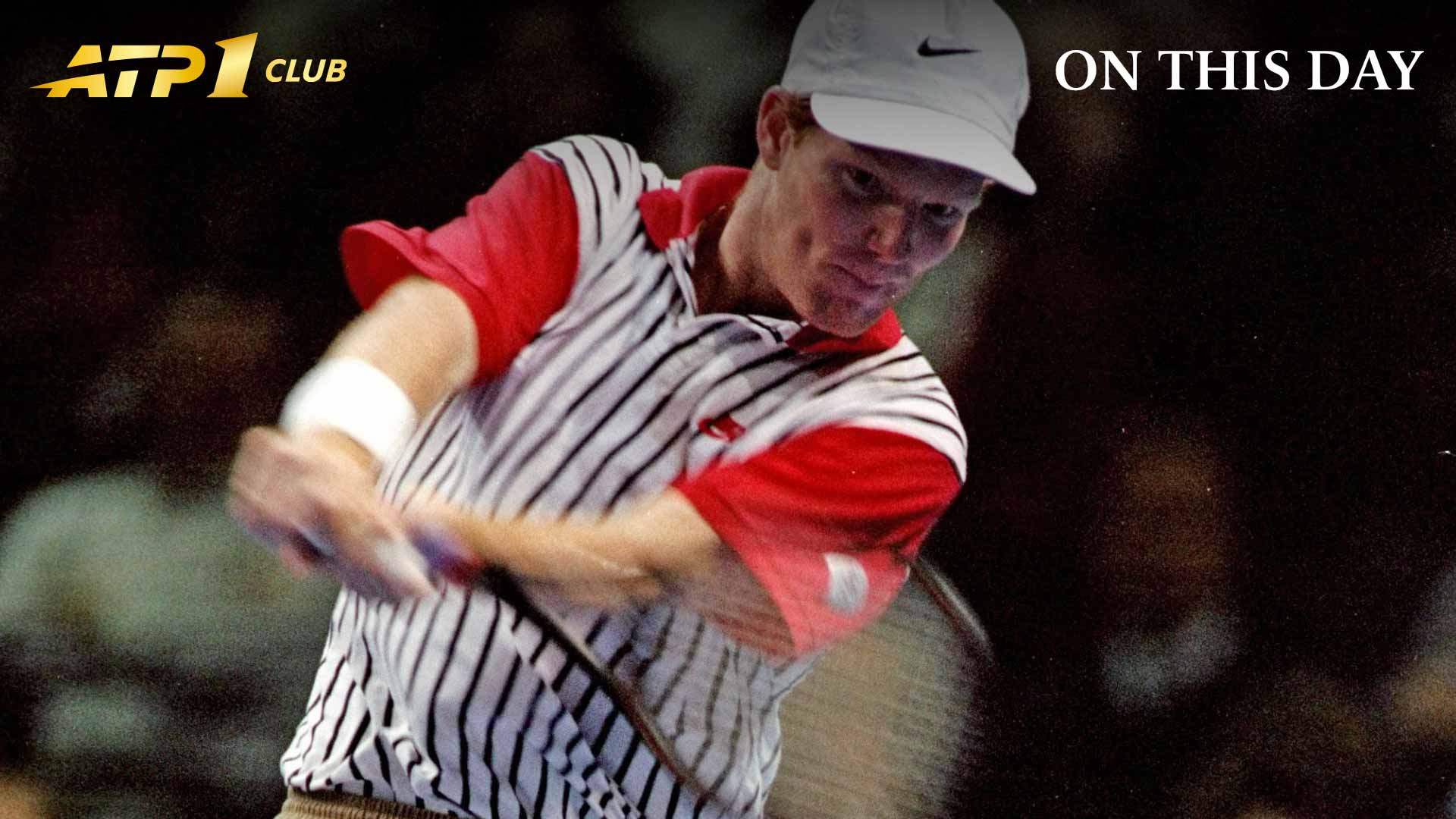

ATPTour.com continues its look at key moments in ATP No. 1 Club history...
Jim Courier’s breakthrough to the top of the PIF ATP Rankings on 10 February 1992 came largely on the strength of his two Grand Slam and two ATP Masters 1000 titles over the preceding 12 months. But it was not until he backed up his first Australian Open title with a run to the final of an ATP Tour event in San Francisco that he sealed his place at the summit.
Courier's intense playing style was built around two of his greatest strengths: his impeccable fitness and his powerful forehand. He hunted that blistering forehand at every opportunity, running around his unorthodox backhand to take charge of points from the backcourt. His pounding baseline game, coupled with his industrious fighting spirit, provided the recipe for his rise to No. 1.
The American became the first man to complete the Sunshine Double in 1991, claiming titles on home soil in Indian Wells and Miami to earn his Top 10 debut. He broke the Top 5 behind his first Grand Slam title at Roland Garros — a run in which he beat then-No. 1 Stefan Edberg in the quarters and eventual No. 1 Andre Agassi in a five-set final — then closed his breakout season by reaching finals at the US Open and the ATP Tour World Championship (now the Nitto ATP Finals).
Entering the 1992 season at World No. 2, Courier again defeated Edberg to win the Australian Open and move to the brink of the summit. By running his winning streak to 11 matches in San Francisco, Courier became the 10th No. 1 in the history of the PIF ATP Rankings by passing the Swede.
“You have to be extreme to be exceptional. I couldn’t revel in being No. 1. I had to get to zero,” Courier said of his mindset at the top of the men’s game. “When my fitness was at its peak, I was intimidating. I made guys cave in. They'd be dejected in the locker room after matches and I'd go out for a run, as if it wasn't enough. I'd rub it in their faces. I meant to do that.”
Courier advanced to the Brussels final in his first event as No. 1 but dropped a marathon five-setter to Boris Becker, who himself debuted at No. 1 in 1991. The American spent six weeks at the top in his initial stint and twice gave up the position to Edberg before finishing the 1992 season atop the PIF ATP Rankings. In addition to the first of his two consecutive Australian Open crowns, his trophy haul that year included hardware from Tokyo, Hong Kong, Rome and Roland Garros.